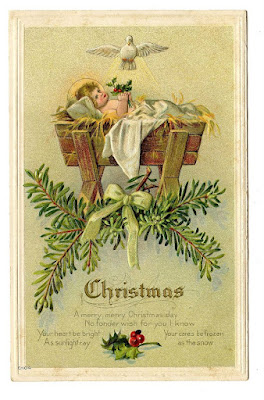Fasting on the Vigil of Candlemas
While not a liturgical vigil in the Roman Rite, the day before Candlemas historically was observed by some as a day of fasting and abstinence. For instance, our ancestors in the New World in Florida and Louisiana would have known the following days of fast:
"The fasting days were all days in Lent; the Ember days; the of eves of Christmas, Candlemas, Annunciation, Assumption, All Saints, the feasts of the Apostles except St Philip and St James and St John, nativity of St John the Baptist; all Fridays except within twelve days of Christmas and between Easter and Ascension, and the eve of Ascension" (ACQ).
Hearing Holy Mass on Candlemas
Candlemas, known formally as the Purification of the Most Blessed Virgin Mary, always falls on February 2nd and it was kept in some places as a Holy Day of Obligation, though that practice has long since ended. For instance, the papal bull Altitudo Divini Concilii of Pope Paul III in 1537 reduced the days of penance and those of hearing Mass for the Indians out of pastoral concern due to the physically demanding lifestyle that they lived and also largely due to the fact that they fasted so much already. The natives were required to only hear Mass on a much smaller number of days: Sundays, Christmas, Circumcision, Epiphany, Candlemas, Annunciation, Sts Peter and Paul, Ascension, Corpus Christi, the Assumption, and the Nativity of the Blessed Virgin.
We see this reflected in Canada as well under the Diocese of Quebec which, at the time, included some of the modern-day states in the Midwest. The American Catholic Quarterly Review lists the Holy Days in place as 1694:
"The holy days of obligation as recognized officially in 1694 were Christmas, St Stephen, St John, the Evangelist, Circumcision, Epiphany, Candlemas, St Matthew, St Joseph 'patron of the country', Annunciation, St Philip and St James, St John the Baptist, St Peter and St Paul, St James, St Anne, St Lawrence, Assumption, St Bartholomew, St Louis 'titular of the Cathedral of Quebec', Nativity of the Blessed Virgin, St Matthew, St Michael, St Simon and St Jude, All Saints, St Andrew, St Francis Xavier, the Conception of the Blessed Virgin 'titular the Cathedral', St Thomas, Easter Monday and Tuesday, Ascension, Whitsun Monday and Tuesday, Corpus Christi, and the patronal feast of each parish."
In 1750, Pope Benedict XIV extended to the Spanish American colonies the indult previously granted to Catholic Spain reducing the days of obligation to all Sundays of the year, Christmas, St. Stephen, the Circumcision, Epiphany, Candlemas, Easter Monday, Annunciation, Monday after Pentecost Sunday, Corpus Christi, Ascension, St. John the Baptist, Sts. Peter and Paul, the Assumption, St. James, the Nativity of the Blessed Virgin Mary, All Saints, the Conception of the Blessed Virgin Mary, and the patron of each locality. Notice that Candlemas remained.
And the Catholics of the British Isles and colonies would have observed the following days as per The American Catholic Quarterly Review:
"The Catholics of the British Isles, after the reform of Pope Urban VIII kept as obligatory: Christmas, the feasts of St Stephen, St John, Holy Innocents, and St Sylvester, Circumcision, Epiphany, Candlemas, the feasts of St Mathias and St Joseph, Annunciation, Sts Philip and James, Finding of the Holy Cross, St John the Baptist, Sts Peter and Paul, St James, St Anne, St Lawrence, the Assumption, St Bartholomew, the Nativity of the Blessed Virgin, St Matthew, St Michael, Sts Simon and Jude, All Saints, St Andrew and St Thomas, and one of the principal patrons of the city, province, or kingdom. These were the holydays of obligation observed by the Catholics in Maryland, Virginia, and Pennsylvania."
Candlemas remained a Holy Day of Obligation in the British Isles and her colonies until the dispensation issued by Pope Pius VI on March 9, 1777, which eliminated Candlemas and a number of other days.
However, looking at our ancestors in the faith, we see both the importance of preparing for Candlemas and its importance. We may wish to observe February 1st as a day of fasting and abstinence and attend the Holy Sacrifice of the Mass on February 2nd.




















